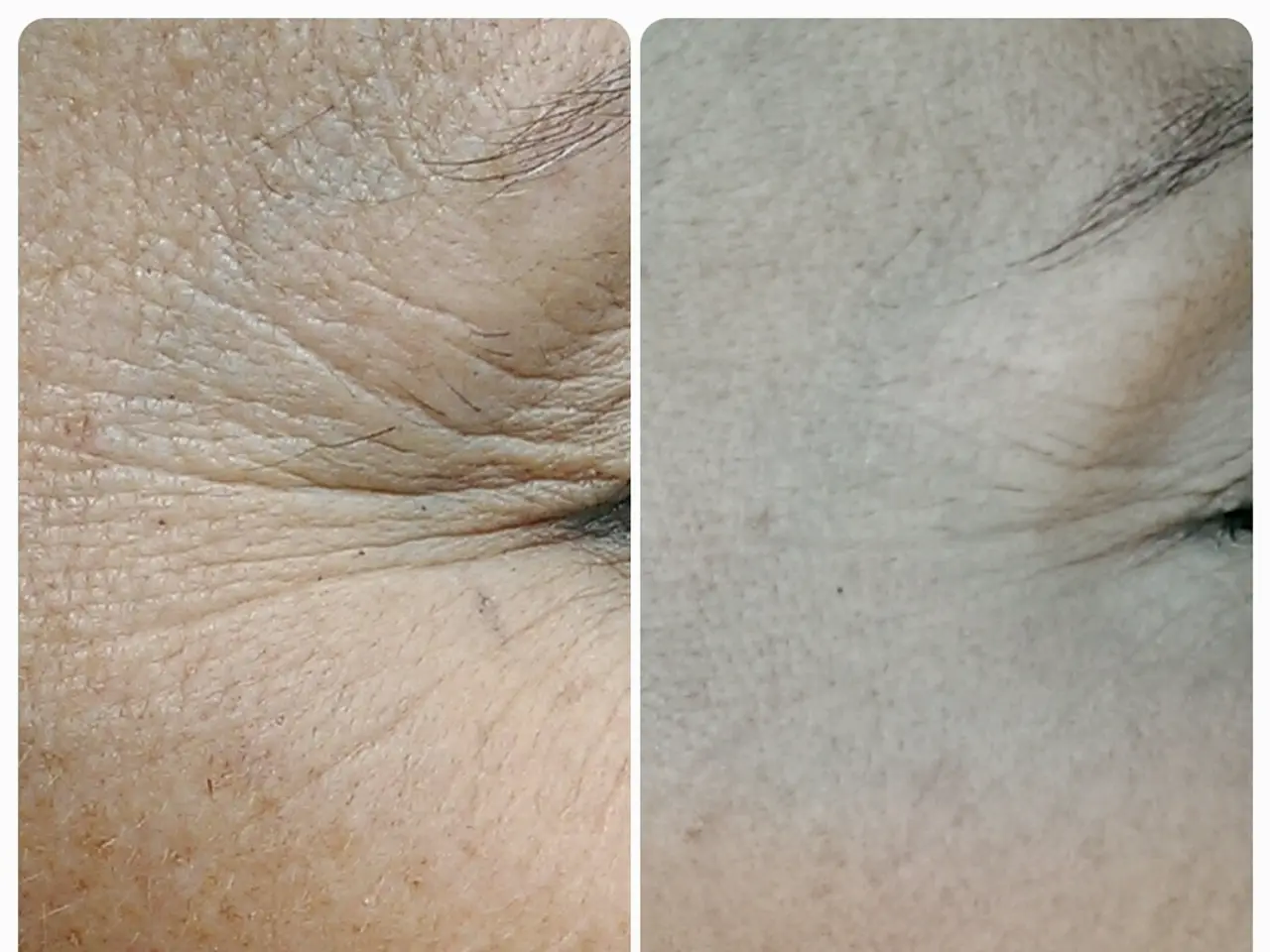Skin irritation from radiation: Signs, remedies, and protective measures
Radiation dermatitis, a common side effect of radiotherapy, affects the outer layers of a person's skin as it is exposed to radiation during cancer treatment. The symptoms, which may include redness, swelling, peeling, dryness, or blistering, can be managed effectively at home using gentle skincare routines and natural agents.
The first step in managing radiation dermatitis is to keep the affected area clean and dry. Gently wash with lukewarm water and a mild, fragrance-free soap to avoid irritation, then pat the skin dry without rubbing.
Cool compresses can provide relief by reducing pain, swelling, and soothing inflamed skin. Apply a cool, damp cloth to the affected area for temporary relief.
Moisturizing frequently is crucial in preventing dryness and peeling. Use gentle, fragrance-free moisturizers to keep the skin hydrated. Ingredients like aloe vera, known for their calming and hydrating properties, may offer additional relief.
Oatmeal baths can reduce itching and inflammation, providing comfort to irritated skin. Soaking in colloidal oatmeal baths is a simple and effective way to find relief.
Avoid scratching or rubbing the affected area, as this can aggravate the skin and increase the risk of infection.
Calamine lotion may help soothe itching and redness, offering temporary relief. Sage extract, rich in anti-inflammatory compounds, is emerging as a potential natural agent for reducing erythema caused by radiation.
It is essential to remember that these home remedies focus on gentle skin care, hydration, anti-inflammatory natural agents, and symptom relief. If symptoms worsen or become severe, medical advice should be sought.
Individuals with certain risk factors, such as older age, malnutrition, smoking, overlapping skin folds, poor skin strength, obesity, undergoing chemotherapy, having another health condition (like diabetes or kidney failure), and genetics, have a higher chance of developing radiation dermatitis.
In most cases, the cells will recover and return to normal after the course of radiotherapy has finished. However, in some cases, radiation dermatitis can appear years after radiotherapy has finished. If the itching is stopping someone from sleeping, their healthcare team may prescribe medications to ease the sensation.
If the skin irritation is accompanied by hives, shortness of breath, or swelling of the throat or face, it could be an allergic reaction and requires emergency medical attention. People should speak to their cancer care team if they experience itching that does not go away after 2 or more days, very rough, painful skin, yellowish skin, tea-colored urine, open or bleeding skin, a rash that gets worse after using creams or ointments, blisters, bright red skin, or crusts on the skin, signs of infection (like pus or tenderness near broken skin), or if itching is stopping someone from sleeping.
In conclusion, managing radiation dermatitis at home involves maintaining a gentle skincare routine, staying hydrated, and using natural agents to soothe inflammation and redness. If symptoms worsen or become severe, it is crucial to seek medical advice.
- Aside from home remedies, it's important to remember that maintaining a healthy lifestyle, such as following a diet that includes weight management to tackle obesity, can help reduce the risk of developing radiation dermatitis.
- regular monitoring of medical conditions like depression or Alzheimer's disease, that may impact a person's ability to care for themselves, could be crucial in early detection and management of radiation dermatitis.
- As radiation treatment may have long-term effects on the skin, it's crucial to maintain good health-and-wellness practices beyond the treatment period, such as a consistent skin-care routine to prevent further damage.
- Those who have undergone proton therapy for cancer treatment may still be at risk of developing radiation dermatitis, and the same guidelines for managing the condition would apply.
- Additionally, individuals undergoing therapy for HIV or MS should be aware of the potential risks of radiation dermatitis and discuss prevention strategies with their medical team.
- Certain predictive models using science, like AQ (Air Quality) index, could help estimate the risk of radiation dermatitis in areas with high levels of pollutants that may worsen the symptoms or slow the recovery process.
- In severe cases of radiation dermatitis, a person may experience symptoms like depression, which could be a side effect of the treatments or a response to the discomfort and stress.
- During chemotherapy, patients may develop skin issues due to the combination of treatments, and it's essential to understand the potential risks and methods for managing radiation dermatitis in these cases.
- Lastly, consulting pertinent medical-conditions resources and doctors, and following the recommended skincare guidelines can help prevent and manage radiation dermatitis effectively.




